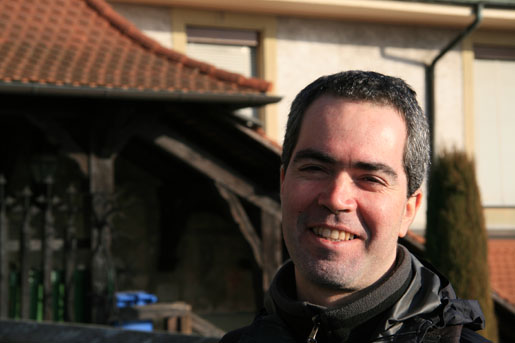
ATLAS e-News
23 February 2011
5 May 2008
Yann Coadou
Nationality: French
 Yann Coadou
Yann Coadou
Yann Coadou may have begun his CERN fellowship just last year, but he is no stranger to the ATLAS project – it is the third time in his short career that he has worked on ATLAS.
“After a lot of travelling, it feels like I’m coming back home,” he says. Yann grew up in France and went to a so-called Grande Ecole. “It covered a broad spectrum of physics, chemistry, economics, and mathematics” says Yann. “You end up knowing a little about everything.” The school had an exchange programme, which allowed Yann to study first in Stockholm and later in Berkeley at LBL. “That’s where I started particle physics,” Yann says. “I worked on ATLAS from Berkeley, with Ian Hinchliffe.”
After graduation, Yann decided to take a PhD at the University of Uppsala in Sweden. That soon meant a return to the ATLAS project. “I worked on the charged Higgs to tau nu analysis at ATLAS between 1999 and 2001 as part of my studies,” he says. The work was rewarding, but Yann decided that his physics education was missing a vital element. “I thought a real physicist has to see real data,” he says. When the opportunity came to work on Fermilab’s DZero experiment to complete his PhD, Yann jumped at the chance. “It was difficult, because I had to readjust,” he says. “But I’m glad I made the choice. It gave me a feel for a real experiment when it’s running. It’s nothing like Monte Carlo!” Yann’s postdoc involved another move – this time to Vancouver in Canada – but he continued working on DZero. His postdoc research led to the first evidence for single top quark production and direct measurement of Vtb, with an analysis using boosted decision trees. The work earned him the prestigious 2007 Tollestrup award.
Last year, his work at DZero complete, Yann returned to the ATLAS project for the third time under a CERN fellowship. “When I arrived here, I could work on anything I wanted to as a Fellow,” he says. “So, I decided to do something I’d never done before.” His previous experience had been with software, but Yann took the opportunity to work on hardware for the ATLAS Pixel Detector. “Everything was still above ground to play with when I arrived, and I could take part in the actual commissioning,” he says. “Of course, it takes time to get used to. It’s totally new, so for the first 6 months you feel useless!”
But Yann soon found his feet - he has also a member of the team writing the calibration software for the pixels, and has taken on a role as the Trigger representative for the tau performance group. “I’m also trying to prepare for the real physics data,” he says. “I’m involved in the W to tau nu analysis.”
Despite the heavy workload, Yann tries to find the time to enjoy being back in Europe after several years away. “I promised my wife when I moved here that I wouldn’t work as much as I had done at DZero during the last few months of the single top analysis,” he says. The two of them are enthusiastic Argentine tango dancers. “We found a wonderful teacher in Geneva who comes from Argentina,” says Yann. “It feels right – exactly how we saw it when we were travelling in Buenos Aires.”
Yann also travels whenever he can, and is full of praise for Switzerland’s public transport network – the bus to CERN notwithstanding. “We’re trying to be good to the environment by using the train. We don’t have a car,” he says. “But Switzerland is wonderful. The train takes you anywhere – to tiny towns where anywhere else in the world there wouldn’t even be a bus! If you go skiing, you’re literally 5 metres from the Téléphérique when you leave the train. You can’t beat that!”
